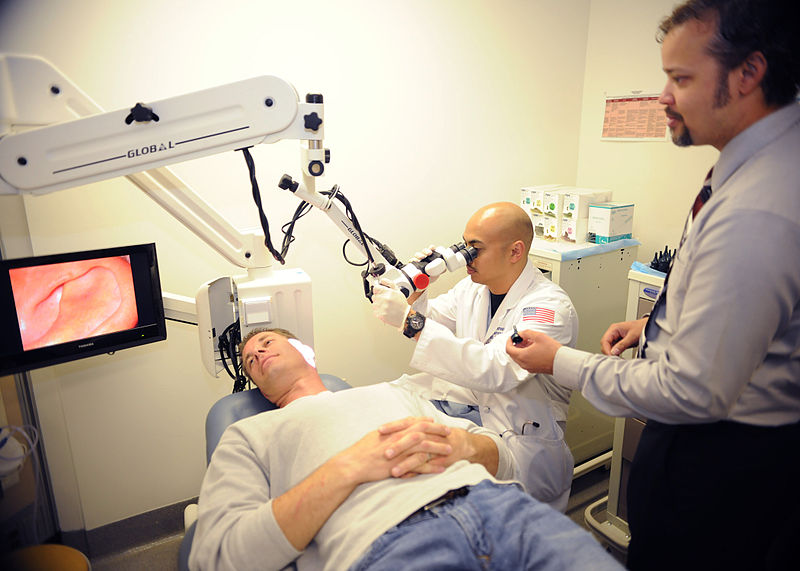
Throughout the healthcare world, doctors and policymakers have started to rally against a somewhat enigmatic but increasingly recognized problem: a "residency bottleneck" that threatens to exacerbate what many already predict will be a devastating doctor shortage throughout the country.
At its most basic level, the problem is one of mathematics: For a variety of reasons, ranging from an aging population to increased healthcare accessibility, there is a greater need for doctors. Current predictions place the physician shortage at 90,000 by 2020.
Medical schools have tried to up admissions to meet this need. But the process of becoming a physician is multi-step, with four years of undergraduate education and four years of medical school, and ending with a training residency of around three to six years. And while there might be more students going to school, there has not been the same increase in the necessary number of residency positions. The effect is similar to cars on a three- or four-lane highway trying to merge into one, single lane.
"We are just a few years away from MD graduates exceeding residency positions," says Leonard Marquez, director of government relations at the Association of American Medical Colleges. "And well qualified candidates may not be able to finish their training and education."
But if the problem is clear, the solutions to this bottleneck are anything but. And this has prompted an increasing concern amongst everyone from top employees at medical school organizations to healthcare policy-minded congressional representatives to current physicians themselves.
Training residents costs $15.4 billion a year, and Medicare is the largest funder of the program, providing $3 billon annually. But this funding is capped: In the Balanced Budget Act of 1997, Congress put a limit on the number of residency positions funded by Medicare in order to help balance the federal budget.
Pamela Murphy, an administrator from the American Association of Colleges of Osteopathic Medicine, says that osteopathic medical schools are also working to boost enrollment and open more schools, yet osteopathic physicians face the same bottleneck issue. Murphy agrees that the '97 cap is a huge factor contributing to the shortage and asserts that "the reality is no one else can lift that cap but Congress."
Recently, certain members of Congress have been trying to bring attention to the residency shortage issue, and several bills have been proposed. One notable example is the Training Tomorrow's Doctors Today Act, a bipartisan bill introduced on March 14, 2013.
If enacted, this bill would increase the number of Medicare residency positions by 15,000 over five years and include other provisions that focus on transparency and accountability in hospital funding.
The Training Tomorrow's Doctors Today Act is cosponsored by Reps. Allyson Schwartz and Aaron Schock. Schock corresponded via email that "the main way we can address the looming physician shortage is to increase the number of GME slots so students who graduate from medical school can receive the hands on training they need in order to gain the experience to become qualified physicians."
But the bill faces many obstacles before it can be transformed from idea into to reality. Currently, the Training Tomorrow's Doctors Today Act has only a 4 percent chance of getting past committee and a 1 percent chance of being enacted.
Even Schock acknowledges that the current political atmosphere is not exactly welcoming towards his legislation because Congress is currently preoccupied with a different issue. The Balanced Budget Act of 1997 that placed a cap on residency positions also established the Sustainable Growth Rate Formula, commonly known as the "doc fix." If this policy remains in place, there will be substantial cuts to physician funding, and different congressional proposals are attempting to repeal these cuts and reform some of the inefficiencies of Medicare spending.
Schock says that he is "hopeful that once Congress is able to pass a long-term solution to the Sustainable Growth Rate policy, we will be able to draw greater attention to this important issue" of residency funding.
Despite such political obstacles, legislation akin to the Training Tomorrow's Doctors Today Act has the full support of organizations such as the American College of Physicians, American Association of Colleges of Osteopathic Medicine, the Alliance of Specialty Medicine and the Federation of State Medical Boards. Murphy says the American Association of Colleges of Osteopathic Medicine proudly "supports the champions who are willing to support these bills."
Outside of the political battles of Congress, a non-profit, non-governmental organization is also taking a look at solutions for the residency bottleneck. The Institute of Medicine, founded in 1970, has created a committee to assess the "Governance and Financing of Graduate Medical Education," which refers specifically to the residency positions funded by Medicare. The organization serves as an advisor to the government on national health issues, an outsider looking in that can provide more unbiased and evidenced-based assessments. It is scheduled to release a report on the residency situation in April 2014.
As an experimental solution, the Teaching Health Center Graduate Medical Education program was included as part of Obama's Affordable Care Act. In 2011, The U.S. Department of Health and Human Services designated 11 new Teaching Health Centers, which will "support an increased number of primary care medical and dental residents trained in community-based settings across the country," according to its website. This program, unlike many residency programs, does not rely on Medicare funding, but is only guaranteed to last five years.
For medical students themselves, the bottleneck has meant that getting a required residency position has become even harder. Last year 528 United States medical graduates did not receive a resident position match – more than double the number of the previous year.
Medical students get residencies through the National Resident Matching Program — or "the Match." This system is like the dating service of the residency world, connecting medical graduates to residency positions at hospitals based on rankings and preferences. This year, a total of 34,355 active applicants — including nearly 1,000 more U.S. medical school seniors — competed for one of 26,392 first-year residency training positions in the Match.
To help increase the chances of finding a match, the typical U.S. applicant applies to 20-25 programs. Graduates need to find a residency position match to continue their certification, and medical schools want to have the best possible percentages of matched graduates, so a lot is riding on this competitive application process.
Those who remain "unmatched" at the end of the process are automatically entered into the Supplemental Offer and Acceptance Program, also known as "the Scramble." This one-week process allows them to apply for unfilled residency positions, but getting placed in the Scramble is a risky and stressful last resort.
One current resident at Westchester Medical Center in New York says that if you are unmatched, "you're kind of screwed…I know people that didn't match and ended up scrambling, and they get stuck in this cyclical loop" of applying, scrambling, and reapplying every year. In the end, many aspiring physicians accept residencies in sub-specialties other than their originally preferred areas of medicine.
Increasingly, unmatched medical graduates are taking a year off to conduct research, pursue additional master's degrees, or study more for the entrance exams, all in the hopes of becoming more competitive for next year's match process.
There are several ideas floating around in the medical literature about how to address the doctor shortage without having to increase residency positions. Suggestions include decreasing the length of residency training, increasing the use of nurse practioners and other medical personnel, and focusing on more efficient models of patient care.
At the moment, however, organizations such as the Association of American Medical Colleges and many political officials with the same perspective as Schock will continue to push for expansion of residency positions. The projected gap between supply and demand for doctors is already 90,000 by 2020 and is expected to grow continuously from there. Because doctors require at least seven years of training, means of alleviating the shortage must be implemented in the very near future if they are going to help avoid a medical crisis in the next decade.



